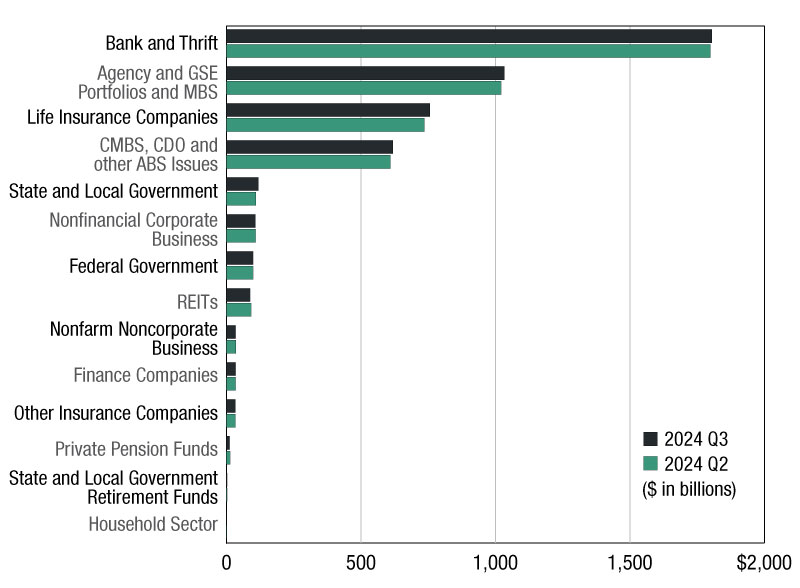Non-traded REITs: KBS Realty Advisors CEO Charles Schreiber Talks About the Latest Trends
Schreiber, who serves as CEO of the Newport Beach, Calif.-based investment advisor and its affiliate, KBS Capital Advisors, recently offered perspectives on major trends and strategies in the non-traded REIT arena.
Since its founding in 1992 by Peter Bren and Charles Schreiber, KBS Realty Advisors has completed $25 billion worth of transactions through five non-traded REITs, 14 separate accounts, six commingled funds and five sovereign wealth funds. Schreiber, who serves as CEO of the Newport Beach, Calif.-based investment advisor and its affiliate, KBS Capital Advisors, recently offered perspectives on major trends and strategies in the non-traded REIT arena.
CPE: What are the major trends these days regarding initial public offerings, mergers and other exit strategies for non-traded REIT sponsors?
Schreiber: In 2012, several non-traded REIT sponsors liquidated investment programs through listings on exchanges, or in one instance through a merger. Although valuations have recently corrected, earlier market conditions were unusually favorable to select property types.
For example, publicly traded healthcare and freestanding net-leased retail REITs are currently trading at significant premiums to net asset values. We believe this largely helped fuel the recent success of listings in those respective markets.
It’s safe to say that non-traded REITs seeking a listing for shareholder liquidity will always be dependent on market conditions. All non-traded REITs should review market conditions to determine which method will be most beneficial to shareholders. The most common options to consider are an initial public offering, dispositions at the individual asset level, a portfolio sale or a merger with an existing entity.
CPE: On the regulatory front, what is on your radar regarding the U.S. Securities and Exchange Commission, the Financial Industry Regulatory Authority or other government agencies?
Schreiber: Regulators want to make sure investors are fully aware of the nuances of the investment offerings they’re buying into, and we obviously fully support that notion and effort. As an industry, we’ve been working diligently to address the regulatory concerns to become more transparent and consistent on key items such as valuations. FINRA is currently reviewing disclosures pertaining to the pricing structures of non-traded REITs and how they’re held on customer statements. The outcome of this conversation is unknown, but we believe the industry and regulators will collectively come up with a solution that is focused on benefitting clients. We think it’s critical to stay in front of pending or proposed regulation so we can incorporate improvements into any future offerings and are looking forward to further guidance from FINRA.
CPE: Let’s turn to strategy. For example, why are some non-listed REITs eliminating internalization fees?
Schreiber: I believe the inherent ability for a REIT to take internalization fees upon buying out, or internalizing, its advisor is rife with conflicts of interest and oftentimes is not beneficial to the investor. Furthermore, there have been examples in the past where internalization fees have been paid and in my opinion the amounts paid have been egregious. It’s been a difficult concept for some sponsors to address, because no one wants to “sell out” for free, but the reality is that historical transactions have left somewhat of a bad taste in investors’ mouths.
In response to the inherent conflicts, sponsors have now begun doing away with the ability for sponsors to take fees upon potential internalizations. It’s certainly putting more emphasis on the sponsor to perform on the back end and generate preferred returns, which is a further alignment of interest and a big positive for investors. While the waiver of internalization fees is important, I feel it’s even more important to consider the overall fee structure. As a whole, the importance of acquisition fees, disposition fees, financing fees and asset management fees can have a significant impact on the total returns of a REIT.
CPE: Another recent innovation is the introduction of the “Daily Net Asset Value” vehicle. What’s behind this new model?
Schreiber: In our opinion, the primary benefit of the Daily NAV offerings are that they function like an open-ended mutual fund and are purporting to have daily liquidity with less restrictive limits on redemptions. The transparency of daily pricing must come along with that feature, but we don’t think daily pricing itself brings a significant amount of value to investors. We believe that if individuals invest in commercial real estate, they should do it for similar reasons that the institutions do—to gain exposure in hard assets through a long-term investment whose expected returns are less correlated to other asset classes.
There are substantial limitations to this structure. Advisors and investors need to educate themselves on these limitations. In my opinion, the three most significant limitations are increased costs due to the high frequency of valuing assets, lower yields due to the need to keep higher amounts or cash in the portfolio and the fact that liquidity is typically limited to 5 percent of outstanding shares per quarter.
For more on non-traded REITs, see “Square Deals” in the March 2013 issue of Commercial Property Executive.







You must be logged in to post a comment.